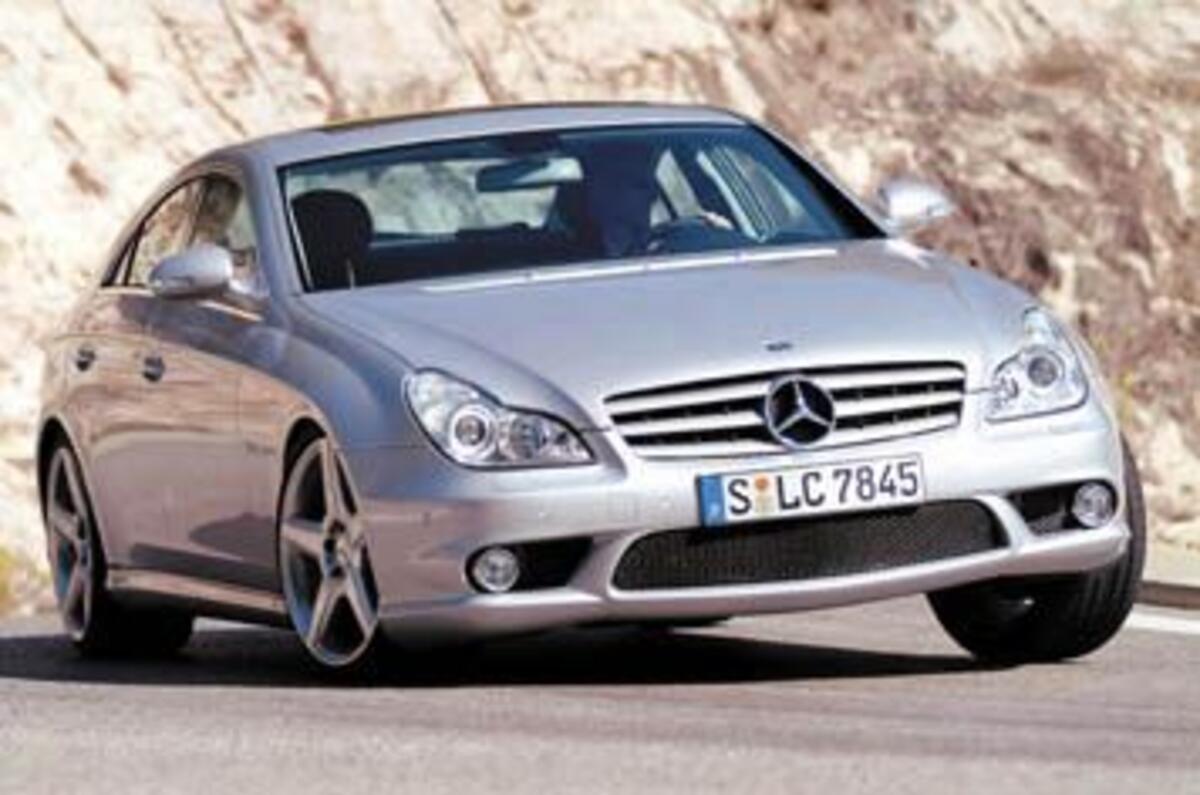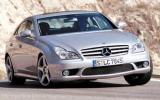Mistake. Thirty seconds of wheel-time in the new CLS 55 AMG was all it took to understand that this is the AMG hotrod we should have compared with BMW’s new M5. Not that a CLS super-saloon was on hand three weeks ago (Autocar, 21 September) but, with the benefit of all-knowing hindsight, the far more sporting CLS would give BMW’s new icon a tougher fight. No, we’re not saying CLS AMG would triumph over M5 – that verdict must wait for another comparison – but the fight would be closer, more compelling.
Judged as a sporting saloon, the CLS 55 AMG feels quite different (and superior to) the E 55. Ironic this, for it is their very commonality under the sheet metal that permits the AMG version to arrive just four weeks after the launch of the regular 350 V6 and 500 V8 CLSs, though all three versions go on sale simultaneously in the UK, early next spring. Normally, the gap between Merc and AMG versions is at least six months.
Just goes to show what can be achieved by fine-tuning the chassis. The key to the CLS’s more fluent handling is the 10 per cent quicker steering rack (not surprisingly, it also becomes standard on the E 55 from November production), fitted to all variants. For the CLS, AMG stiffened the rack’s mounting bushes to add further precision to the helm. Mercedes’ Airmatic suspension is standard on the CLS 55, the ride height set 10mm lower. To further emphasise the low-slung coupé-like styling, the test car’s new twin five-spoke 19-inch alloys (18s are standard) bulge out to fill every millimetre of the wheelarches. Can’t wait to see LA’s first blinged CLS 55 on 22-inch chrome rims.
AMG’s engineers also played with the front dampers, but left the spring rates and rear dampers alone, although the rear suspension is now mostly steel (rather than alloy), and driveshafts and prop shaft reinforced to cope with the added torque. The dampers are 30 per cent stiffer in compression and 10 per cent stiffer in rebound (in all three modes). Subtle changes only, but they verify the regular CLS chassis’ more driver-oriented character. The standard tyres come from the SL55, but the test car rode even more aggressive 245/35 ZR 19 front and 285/30 ZR19 rear Pirelli P-Zero Rosso rubber.
Unsurprisingly, AMG selected its near-ubiquitous (six-model strong) 5.4-litre supercharged V8 for the speediest version of the CLS. Its numbers match those of the E 55 – 469bhp at 6100rpm, and the gut-wrenching 516lb ft of torque from 2650-4500rpm that is the real secret to the effortless, big-hearted, performance. Despite the CLS’s 85kg weight penalty over the E 55, Mercedes’ claims identical performance – 0-62mph in 4.7sec. The shock when we first drove this strident engine in the SL55, and revelled in its monstrous linear acceleration, has receded through familiarity and in the face of ever-more-powerful AMG models. But don’t let this detract from its capacity to deliver true speed in any circumstances, at least on the dry roads we experienced during the launch.
If anything, the new CLS enhances the latent potential of the engine. The new model’s character is less point-and-squirt, more precisely flowing, more intuitive, than the E 55’s. The cohesive tautness of the CLS means it feels more sorted and controlled than the E 55, so speed can be carried more easily into, and through, corners. The quicker steering reduces the sensation of understeer, though this remains the dominant handling trait. Still, the various electronic interventions allow you to slightly alter the car’s stance by means of the throttle, braking the inside wheel or wheels, before power is cut. The result is a more natural driver’s car, with less obvious computer manipulation than in the E 55. And that allows you to push harder: the car’s broader sweet spot is easy to find, and far easier to enjoy.




















Add your comment